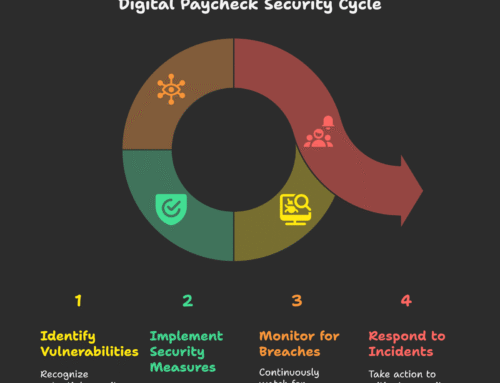Coffee is, for many of us, the first thing we use in the morning to awaken our bodies and minds before going off to work. It comes as a salvation and comfort throughout long and hard days in the office. But many people notice that as time goes on, they need more and more caffeine to get the same effect. It becomes a strange and habit of overstuffing without much pleasure and benefits it used to bring.
Like almost all the good things in life, it’s about timing. Below, we’ll explore how caffeine works, so we can see why this happens, how much you actually need, and how to make the most of it by timing your intake.
Caffeine’s effect on the body
Caffeine is the main ingredient of coffee that makes us feel awake and filled with energy. It’s found naturally in various substances, from tea and coffee to chocolate. It’s in energy drinks, some cold and flu medication and even made into caffeine pills. Caffeine works by replacing a chemical called adenosine in the brain, which builds up during the day and binds to certain receptors, slowing down brain activity.
Also read: How Some Simple Changes Can Make Your Work Life Happier
When caffeine takes its place, it doesn’t have this effect, and can actually increase reaction times, memory and reasoning skills. It also increases the body’s production of adrenaline and dopamine, making us feel energetic and happy.
The healthy amount of caffeine
However, caffeine is a drug. And like with any other drug, people can develop immunity reaching certain stages where the usual amount just isn’t enough. This happens especially to people working in offices, where coffee is a daily must. Fortunately, it’s almost impossible to overdose on caffeine, as the levels involved are quite high, and coffee slowly wears off over around 3 hours; but there is still such a thing as too much coffee. The Mayo Clinic recommends 400mg of caffeine a day, or around 4 cups of instant coffee (3 of filter coffee).
Some people are naturally more sensitive to caffeine, so they won’t need this amount. People with certain medical conditions, such as Generalized Anxiety Disorder, are recommended to avoid caffeine entirely. Anyone who has amounts above their tolerance can experience side-effects though, from increased blood pressure or stomach irritation to more serious symptoms such as problems with sleeping, restlessness, nausea or vomiting.
These effects are uncommon, but we are more aware of the effects of withdrawal – sleepiness, irritability, and anxiety. These become more common the more caffeine a person drinks – but if we get to this point, we feel we have to drink more to get the same benefits. To some degree, this is related to the body’s adenosine receptors in the brain – the more they’re blocked by caffeine, the more receptors the brain makes, meaning we need more caffeine to replace the increased amount of adenosine.
Curious to know how you can improve employee engagement using neuroscience? Download our free eBook on Neuroscience in the Workplace!
There isn’t much we can do about this besides a 7-day detox to reset our system, but luckily, there is another aspect of our biology at work when we drink caffeine, which can make drinking less coffee far more effective. The solution is to drink strategically and take our office shots at certain times of the day.
Getting the most out of less
Coping with those heavy office tasks, some people suggest drinking smaller amounts of coffee throughout the day, which can keep our bodies’ levels of caffeine steady. However, it’s not the most effective solution. In order to work with our bodies’ natural rhythms, we need to avoid drinking coffee at one of the most popular times of day for doing so – first thing in the morning. Now, that’s a bummer, right?
The reason for this is related to the body’s circadian rhythm, which is like our internal body clock, telling us when to go to bed, and more importantly, when to wake up. As we wake up, our bodies release a hormone called cortisol. Cortisol is known as the stress hormone, as it’s released in high quantities when we’re under pressure, but it also gives us a natural boost to help us get up in the morning.
When we drink coffee too early, the caffeine affects cortisol in two ways. First, it interferes with the body’s production of cortisol. The body starts to produce less and relies on caffeine as a result. So, rather than adding to the boost that cortisol gives us, this means that we end up needing more caffeine because it increases our tolerance to it. It ends up creating a vicious cycle.
Also read: Better. Faster. Smarter. Are Smart Drugs Taking Over Your Business?
When to drink coffee
It’s best to drink coffee when cortisol levels have decreased. In the morning, that’s between 9:30 and 11:30 am. As hard as it sounds, you just might want to try commuting to work without that early cup of Joe. And it’s nice to take an early 10 to 15-minute breather from work, rewarding ourselves with a cup. Cortisol spikes again after this, so your next window for coffee is between 1:30 and 5:00 pm, just in time to top off your lunch break with that delicious cup, maybe even two, for us enthusiasts.
Since these times are based on our circadian rhythm, which is in turn based on the sun, they’re the same for everyone, no matter when you wake up in the morning. If you have to get up really early when there’s plenty of time before 9 and you think you might be able to fit in a coffee, bear in mind that cortisol increases no matter when you wake up. It’s not as much as at 9, but it’s still best to wait an hour after waking up to get the most out of your coffee.
You don’t need to drink more coffee – you just need to drink it more wisely. 4 cups of coffee a day is enough for us to feel alerted without feeling any side-effects, and drinking it between 9: 30 and 11:30 am, and 1:30 and 5:00 pm means we avoid the worst of the effects of withdrawal, just by working with our bodies’ natural rhythms. And, it truly runs well with our office schedules.
Download the eBook and learn how to use neuroscience to attract the right talent, retain high-performing employees and foster collaborative teams.
About the author
Rudy Caretti has more than 15 years of experience in the coffee industry, a passion that started in Italy within the family business and brought him to found Gimoka Coffee UK and G Coffee Pod with a group of friends, who share the same passion. Since he roasted his first batch of coffee seeds as a teenager, he was fascinated by the many ways it can be processed to get the many different distinctive flavors we all love.
Image via Pexels.com






Leave A Comment